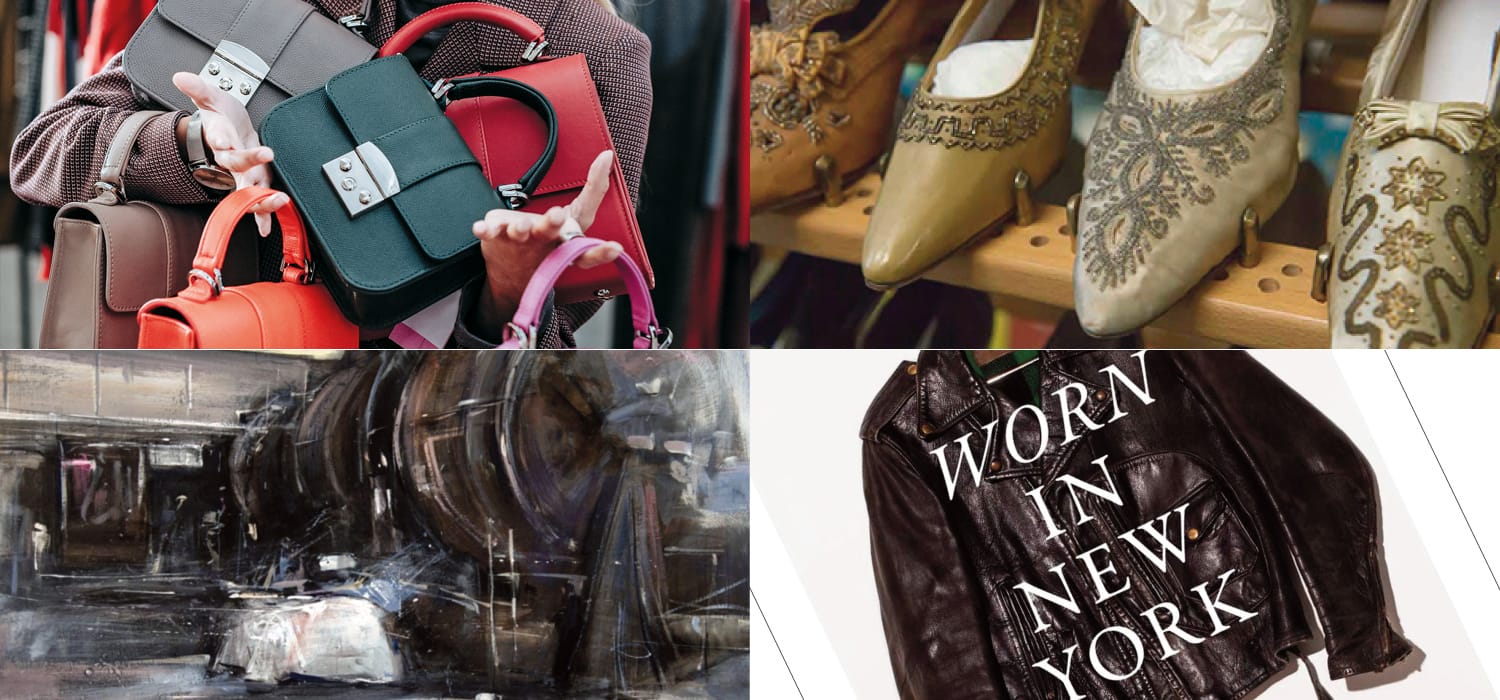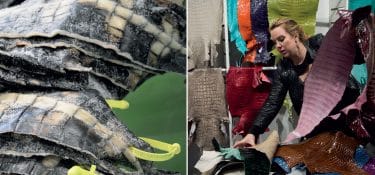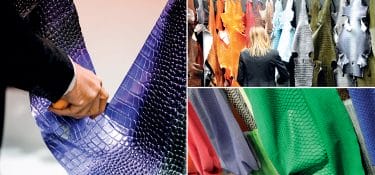Tanneries
Riccardo Luchini
Painted like that, perhaps, we’ve never seen nor admired them.
They are tanneries, as Tanneries is the original title of the series, portrayed by Riccardo Luchini and the subject of a double exhibition session last year.
First at Casaconcia, the artistic space of Consorzio Vera Pelle Conciata al Vegetale in Ponte a Egola (San Miniato). Then at Fieramilano Rho, during Linepelle95, last September. Paintings that express “evanescent atmospheres, soft fluffiness and smoky vibrations that make pictorial representations suggestive with an unmistakable stroke of fast, incisive and reliable brushstroke”. Paintings that, more than many words, tell the deep and dynamic identity of tannery.
Time
THE WITHDRAWAL OF CONSUMERS AND THE DEFEAT OF THE PRODUCT
Today’s young generation buy 60% more fashion products than their peers 15 years ago. At the same time, British Millennials consider old a garment worn two or, at the most, three times. That’s according to a report by McKinsey, quoted by La Repubblica. Is consumer bulimia good for the fashion system? The report limits itself to commenting on how the phenomenon is transforming retail, also of high-end range: second-hand market platforms and clothes rental services are flourishing on the market. But the consequences are deeper.
The blogger and researcher Venkatesh Rao has coined the term “mediocre premium” to indicate those products that, despite not being of high segment, are offered as such to the public by virtue of some quality strokes. The blogger does not refer to fashion, but it takes little time for Business of Fashion to identify the analogy with some industry trends. In the name of “oxymoronic” expressions such as “affordable luxury”, brands entice the aspirational consumer with accessories that, after all, have little in common with luxury. It is a course that comes from far away (at least from the 80s) and that, from the French brands to the big American brands, concerns everyone.
The phenomenon has two victims: the product and the product culture. It is inevitable that a market where the consumer perceives the life of the accessory as short and crushes his desires on the range of brands with the greatest commercial appeal, engaged in a profitable decline from the high to medium segment, consumption is at the same time more frenetic and less rich in variety. The chain of the authentic medium range pays for the consequences, found without spaces and delegitimised in the eyes of the customers. (rp)
The Exhibition
THE BUSINESS WITH THE SHOE
Swiss since 1851. But also Chinese for a year, that is, since they were acquired by Shandong Ruyi group. Strong with an enviable heritage. A real strategic re-reading of their market approach is addressed. But not risking at all to deny their glorious past. Indeed, far from it, as Bally will be the protagonist of an exhibition at the design Museum in Zurich until August 11. Title: The Business with the Shoe. It is an exhibition that winds along the brand’s almost 170 years, moving through the produced models, the sketches and the machines coming from the company archive and offering visitors the opportunity to try out the current shoe models, from the most classic in leather to the latest sneakers. The message is clear: the leather (which characterises so much of Bally’s production), the shoe and every other accessory may be considered “products”, but they possess a precise historical and cultural value.
The Reading
EMILY SPIVACK
WORN IN NEW WORN YORK
68 Sartorial Memoirs of the City
Abrams Image | 2017
Personal stories, of passions and fears. Intimate events interweaving with those public of big cities. All summarised in a clothing item or an accessory, summing up their meaning.
Emily Spivack, a new York Times author, tells about how the idea of recounting life in the Big Apple through the stylistic choices of its inhabitants came to her mind. First, because she wanted to guess what was hiding behind the choices of the looks of the fellow citizens she met in the street or in the metro. Then, reflecting on the considerations made by sociologist Elisabeth Wilson, who wrote about clothing as the bond between individuality and the presence of that person in society.
From that intuition Worn in New York was born, a collection of 68 stories from the last half century of the city from the voices, and the clothing items, of its guests (more or less) famous. Leather clothing items and accessories, it could not have been otherwise, have a central role in the work. From the jacket on the cover, the leather jacket from Sears that Catherine Opie, photographer and university professor from a small city in California, received as a gift when she had just moved to the Big Apple. It was the middle 80s, Opie was in her early twenties and the biker jacket was the first step of the transformation in a (sometimes even savage) metropolitan citizen. From intimate to public, we were saying.
Because among these leather accessories are also those connected to big, dramatic, events from recent years of the “city that never sleeps”. Like the Manolo Blahnik shoes that producer Amy Heckerling (Look Who’s Talking, Gossip Girl) bought for her participation at the September 2001 edition of the MTV Video Music Awards. Just when she was thinking that a broken heel of her precious shoes was the symbol of her misfortune, the fury of Al Qaeda fell on the Twin Towers, leaving a wound in the city and teaching her a lesson.
The review also presents the boots worn in January 2009 for his first visit in new York by Ben Bostic, a computer scientist from north Carolina. His return flight was US Airways 1549, landed five minutes after taking off into the Hudson River, after the impact with a flock of birds. To him, a survivor, his shoes have become a part of that experience.










